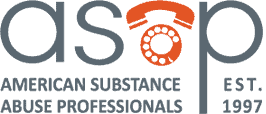What is the FMCSA Drug and Alcohol Clearinghouse (Clearinghouse) and what information does it contain?
The Clearinghouse is a secure online database that gives employers, the Federal Motor Carrier Safety Administration (FMCSA), State Driver Licensing Agencies (SDLAs), and State law enforcement personnel real-time information about commercial driver’s license (CDL) and commercial learner’s permit (CLP) holders’ drug and alcohol program violations. The Clearinghouse was an act of Congress directed by the Secretary of Transportation back in 2012.
The Clearinghouse contains records of violations of drug and alcohol prohibitions in 49 CFR Part 382, Subpart B, including positive drug or alcohol test results, test refusals and actual knowledge violations. When a driver completes the return-to-duty process and follow-up testing plan, this information is also recorded in the Clearinghouse. The Clearinghouse launched on January 6th, 2020 for those authorized to utilize.
How long will CDL driver violation records be available on the Clearinghouse site for employers to see?
Violation records for CDL drivers stay on the Clearinghouse site for five years after successful completion of the DOT return-to-duty process and follow-up testing plan.
If a driver has a drug and alcohol program violation in one state, then applies for a commercial driver’s license (CDL) in another state, will the Clearinghouse be able to connect that driver’s drug and alcohol violation history to the new CDL?
Yes. The Clearinghouse will identify drivers who move frequently and obtain CDLs in different states and link those CDLs, in order to maintain complete and accurate information on such drivers.
Does a failed DOT drug test go on your record?
Yes. If you failed or refused a DOT Federal Motor Carriers Safety Administration (FMCSA) drug and/or alcohol test or had an actual knowledge violation, it is reported in the FMCSA Drug and Alcohol Clearinghouse if it occurred on or after January 6, 2020. The FMCSA Clearinghouse is a secure online database which contains records of violations of drug and alcohol prohibitions in 49 CFR Part 382, Subpart B, including positive drug and/or alcohol test results, test refusals and actual knowledge violations. Only violations that fall under and tested under FMCSA are reported into the Clearinghouse. The Clearinghouse database was a congressional mandate directed to FMCSA agency. All DOT or Federal agencies are still required to follow 49 CFR Part 40 (FAA, FTA, FRA, PHMSA and USCG), including FMCSA pertaining drug and alcohol violations.
Are CDL drivers required to register for the Clearinghouse?
Drivers are not required to register for the Clearinghouse. However, a driver will need to be registered to provide electronic consent in the Clearinghouse if a prospective or current employer needs to conduct a full query of the driver’s Clearinghouse record—this includes all pre-employment queries. A driver must also be registered to electronically view the information in his or her own Clearinghouse record. Registered drivers will have their Clearinghouse accounts and contact preferences set up, allowing them to quickly respond to query requests from employers.
Who is required to go through the DOT Return to Duty SAP process?
All DOT regulated safety-sensitive employees/candidates employed in the aviation, railroad, public transit, trucking, maritime, and pipeline industries who have violated federal DOT drug and alcohol testing rules with a positive test result, a refusal to test or other violation.
If you fall under Federal Aviation (FAA), Federal Motor Carrier Safety Administration (FMCSA), Federal Railroad Administration (FRA), Federal Transit Administration (FTA), Pipeline and Hazardous Materials Safety Administration (PHMSA) or the United States Coast Guard (USCG) and you failed or refused a DOT drug and/or alcohol test you must still complete the return-to-duty process in order to return to safety-sensitive duty.
I was terminated after a violation. Do I still need to go through the Return-to-Duty SAP process?
Yes. Once you have violated the Department of Transportation (DOT) drug and alcohol testing regulations, you are considered ineligible to perform safety-sensitive duties for any employer until you have completed the return-to-duty process.
If I test positive on a DOT Drug or Alcohol test, can't I just retake the test?
If you are a DOT-mandated employee, and you receive a positive test, you must be removed from safety-sensitive duty until you complete the return-to-duty process. The Substance Abuse Professional (SAP) portion is a part of the DOT return-to-duty process. ASAP has nationwide reach in all 50 states and U.S. territories to help get you back to work safely.
How long will the entire SAP Process take?
The time it takes to complete the SAP portion of the DOT return-to-duty process varies per case. The SAP will make a clinical assessment and recommend treatment(s) and/or education based on your individual needs. Note: The SAP must make a recommendation for some level of care per DOT CFR 49 Part 40, Subpart O.
Is return-to-duty and follow-up testing required?
Yes, you must test negative on an observed DOT return-to-duty (RTD) drug/alcohol screen before returning to DOT safety-sensitive work. Your employer or prospective employer will request the RTD test, which supersedes a pre-employment test in this situation. You are also subject to unannounced and observed follow-up tests for a period of 1 to 5 years according to a plan determined by the SAP and provided to your employer.
What if I quit my job and now work somewhere else?
If you are a DOT safety-sensitive covered employee with a failed test or refusal to test (DOT violation) and move to another employer, you are still required to successfully complete the DOT return-to-duty (RTD) process before returning to any DOT safety-sensitive position. Failing to comply with the DOT RTD process can result in fines for both you and your new employer. ASAP has a nationwide reach in all 50 states and U.S. territories to help you get back to work safely.
What if I applied for a job and I was not hired?
If you are a DOT safety-sensitive covered employee with a failed or refusal to test (DOT violation) you are still required to complete the DOT return-to-duty process. You are unable to work in any DOT safety-sensitive position until you have successfully completed this program. The Substance Abuse Professional (SAP) portion is a part of the DOT RTD process. ASAP has nationwide reach in all 50 states and U.S. territories to help get you back to work safely.
Will CBD Oil Make You Fail a Drug Test?
Non-psychoactive CBD oil is used to treat anxiety, inflammation, arthritis, epilepsy and a range of other conditions in some cases. In many states, a prescription is not necessary to purchase CBD oil. The production of CBD products remains unregulated by the Food and Drug Administration (FDA) and CBD products that contain more than a 0.3% concentration of THC are classified as marijuana, a Schedule I substance, as classified by the United States Drug Enforcement Agency (DEA). The Department of Transportation (DOT) has their own notice regarding CBD use.
The Office of Drug and Alcohol Policy and Compliance (ODAPC) that prevails over DOT 49 CFR Part 40 has also provided notice on CBD products. The DOT requires testing on marijuana THCA metabolites and not CBD. Marijuana remains classified as a Schedule I drug under the Controlled Substance Act. CBD product labeling may be misleading and contain higher levels of THC, which could result in a verified positive drug test. CBD products are NOT currently certified by the FDA and have issued caution to the public: “Consumers should beware purchasing and using any [CBD] products.” The notice can be viewed here.
Will Mushrooms / Psilocybin Make you Fail a Drug Test?
Psilocybin mushrooms, known as magic mushrooms, is a hallucinogenic matter. Although taking Psilocybin will not land you a positive DOT 5 panel drug test it is an impairing substance and dangerous to consume, especially in a safety-sensitive role at work. Mushrooms are consumed fresh, cooked, smoked and even brewed into tea due to their bitterness. Mushrooms have been mixed in tobacco and cannabis. Cannabis is tested in the DOT 5 panel drug test and it will result in a positive test.
What is tested in a DOT 5 panel drug test?
There are many substances tested in a 5 panel Department of Transportation (DOT) drug test. The DOT drug panel was updated January 1, 2018 to adjust the Ecstasy panel and more semi-synthetic opioids were added. For instance, the amphetamine panel is broken down to test for the following: amphetamine, methamphetamine, MDMA and MDA. The drug MDMA, methylenedioxymethamphetamine is also called Ecstasy. The opioid panel includes codeine, morphine, 6-AM (heroin), hydrocodone, hydromorphone, oxycodone and oxymorphone. Here are some of the common brand names that are tested under the DOT opioids panel today: OxyContin®, Percodan®, Percocet®, Vicodin®, Lortab®, Norco®, Dilaudid®, Exalgo®.
- Marijuana (THC)
- Cocaine
- Amphetamines (Amphetamine, Methamphetamine, MDMA, MDA
- Opioids (Codeine, Morphine, 6-AM (heroin), Hydrocodone, Hydromorphone, Oxycodone, Oxymorphone)
- Phencyclidine (PCP)
What is Clearinghouse II?
The requirement to downgrade commercial driver’s license (CDLs) of drivers in a “prohibited” Clearinghouse status rests on the safety-critical premise that drivers who cannot lawfully operate a commercial motor vehicle (CMV) because they engaged in prohibited use of drugs or alcohol or refused a drug or alcohol test should not hold a valid CDL or commercial learner’s permit (CLP). The Clearinghouse-II final rule (86 FR 55718) supports FMCSA’s goal of ensuring that only qualified drivers are eligible to receive and retain a CDL, thereby reducing the number and severity of CMV crashes.
The Clearinghouse-II final rule (86 FR 55718) requires that, beginning November 18, 2024, State Driver Licensing Agencies (SDLAs) must remove the commercial driving privileges from the driver’s license of an individual subject to the CMV driving prohibition. This would result in a downgrade of the license until the driver completes the return-to-duty (RTD) process.
Source: https://clearinghouse.fmcsa.dot.gov/FAQ/Topics/CDL-Downgrades
Can a driver complete a return-to-duty (RTD) test, have it reported in the Clearinghouse if the driver does not have an employer?
Yes. Under 49 CFR 382.705(b)(1)(ii), employers that are subject to FMCSA’s drug and alcohol regulations in 49 CFR part 382 are required to report drivers’ negative RTD test results to the Clearinghouse. However, if a driver does not have a current or prospective employer subject to part 382 to send the driver for an RTD test and upload the negative result, the driver may register in the Clearinghouse as an owner-operator and designate a consortium/third-party administrator (C/TPA) for the limited purpose of completing the RTD process. Once designated, the C/TPA can direct the driver to submit to an RTD test and report the negative RTD test result to the Clearinghouse on the driver’s behalf. When the C/TPA reports the negative RTD test result, the driver’s Clearinghouse status will change from “prohibited” to “not prohibited,” thereby allowing the driver to resume driving a CMV and performing other safety-sensitive functions. Note: the driver’s follow-up testing plan prescribed by the substance abuse professional must be administered by the driver’s employer when the driver resumes working in a DOT safety-sensitive position.
Drivers using this option will need to create a new account in the Clearinghouse with the “Employer” role (note: this will require creating a new Login.gov account). When registering, select “Register as an Employer and Driver” and be sure to select “Yes” for the question “Are you an owner-operator?” Download step-by-step instructions. Drivers should not apply for a U.S. DOT Number when using this option to complete the RTD process.
Last Updated : September 16, 2024 / Source: https://clearinghouse.fmcsa.dot.gov/Resource/Index/Registration-Instructions-Employer-without-Portal
What steps does an FMCSA driver take to go from “Prohibited” to “Not Prohibited” in the Clearinghouse?
To change a driver’s status from “prohibited” to “not prohibited” in the FMCSA Clearinghouse, the process begins with the driver engaging a DOT-qualified SAP to initiate the Return-to-Duty (RTD) process as outlined in 49 CFR Part 40, Subpart O. The SAP will guide the driver through a prescribed program of education and/or treatment and determine when the driver has successfully complied with the recommendations in a follow-up evaluation. Once compliance is achieved, the driver becomes eligible for an RTD test. The driver must then take and pass a DOT-regulated RTD drug and/or alcohol test, conducted by an employer or prospective employer. Upon receiving a negative result, the employer updates the Clearinghouse with the test date, which changes the driver’s status to “not prohibited.”
If the driver’s commercial driver’s license (CDL) or commercial learner’s permit (CLP) was downgraded by the State Driver Licensing Agency (SDLA), the driver must follow the specific requirements of their state to have the CDL or CLP reinstated.
https://clearinghouse.fmcsa.dot.gov/FAQ/Topics/CDL-Downgrades




